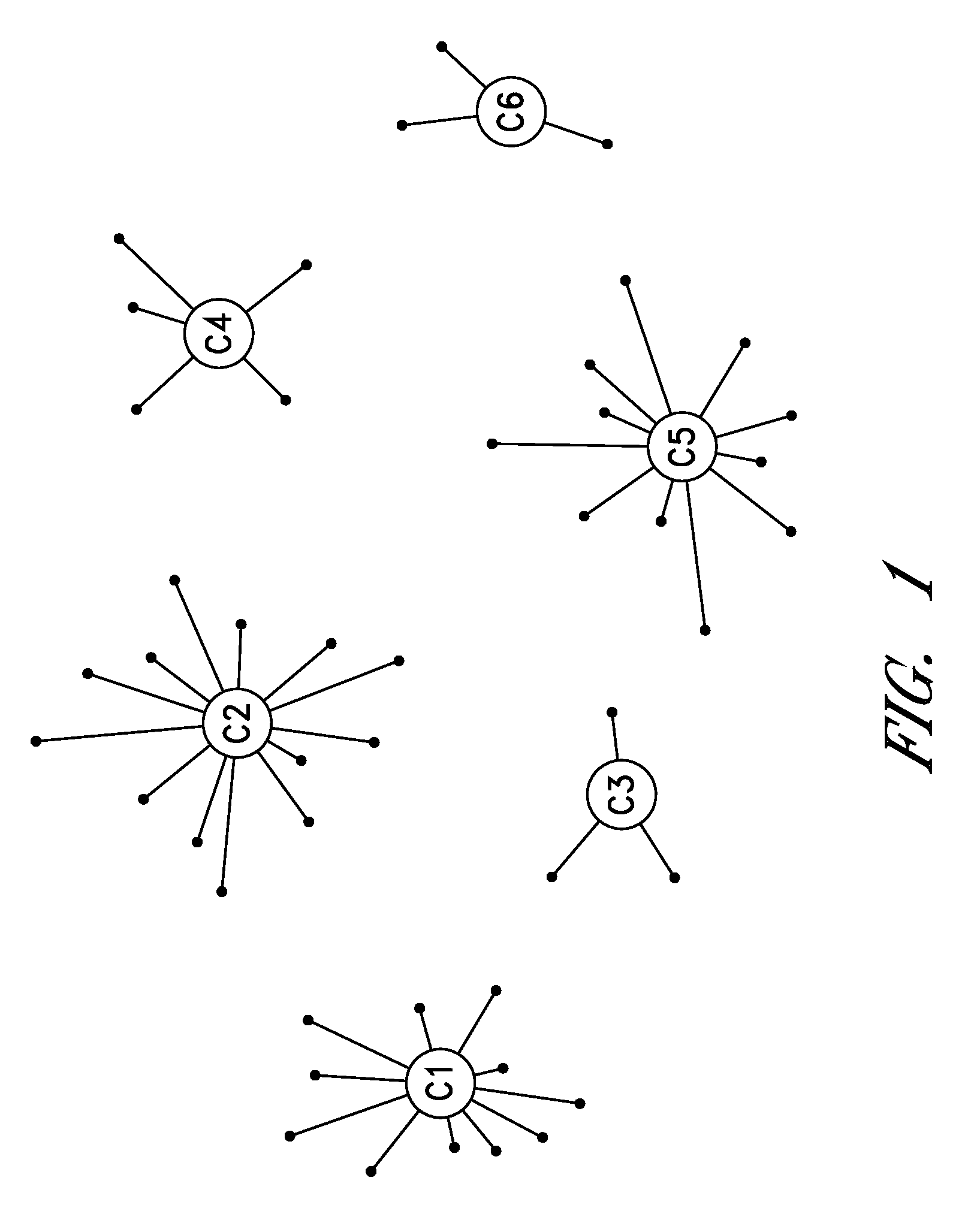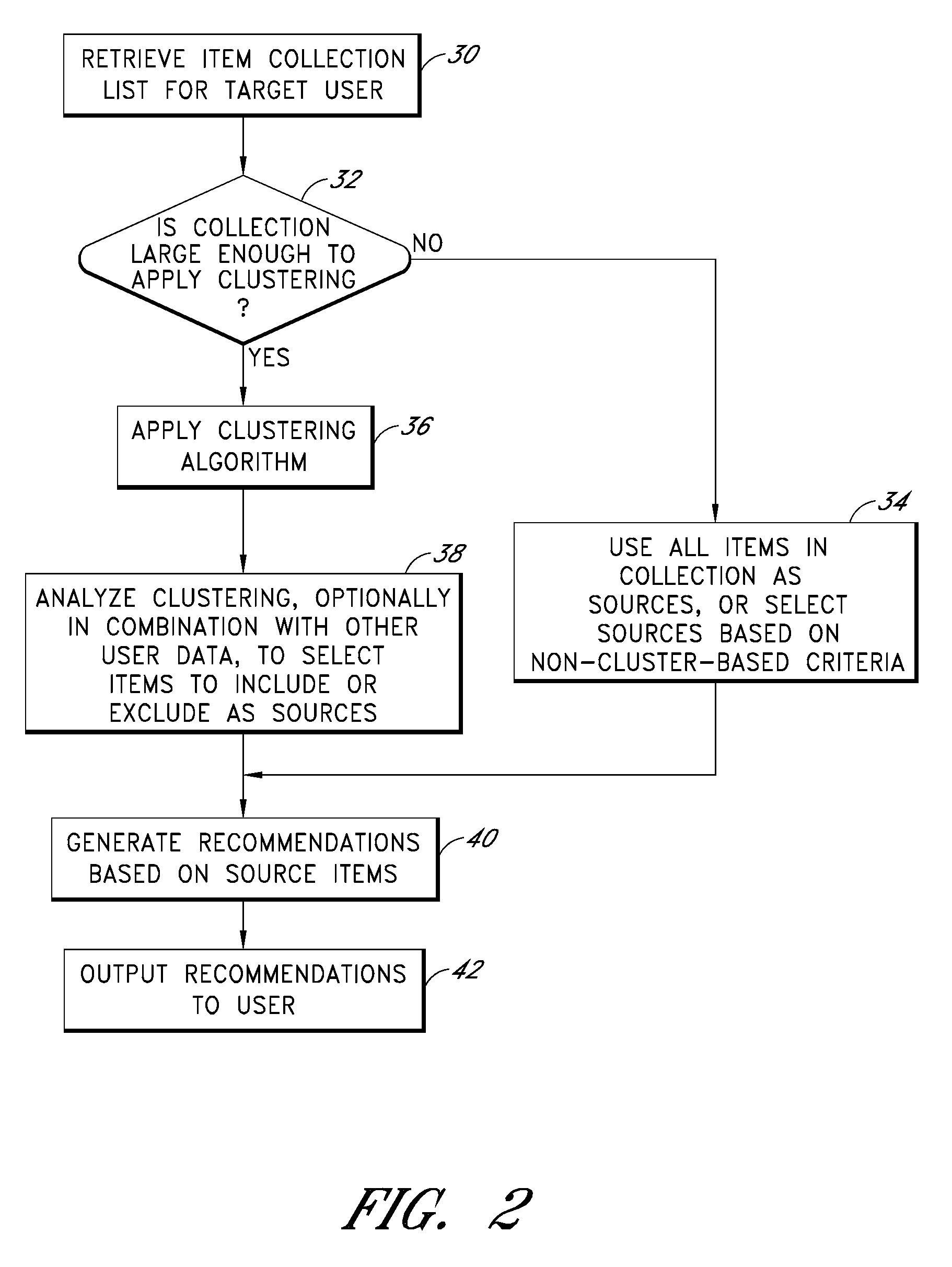Cluster-based assessment of user interests
a user interest and clustering technology, applied in the field of data analysis and clustering methods, can solve the problems of difficult identification and filtering out of items, limited utility of recommendations, and difficulty in reliably identifying such items without explicit user input, etc., and achieve the effect of improving recommendations
- Summary
- Abstract
- Description
- Claims
- Application Information
AI Technical Summary
Benefits of technology
Problems solved by technology
Method used
Image
Examples
first embodiment
[0071]FIG. 5 illustrates this process according to a In step 70, a set of recommended items is generated for a user. The recommendations may be generated using any type of recommendation engine and process, including the various processes described herein. In step 72, a clustering algorithm is applied to the set of recommended items. The clusters may, but need not, be formed using the distance metric and clustering algorithms described in Sections V-VIII.
[0072]In step 74, a category name is assigned to each cluster based on attributes of the items in that cluster. This may be accomplished in various ways. For example, if the items are arranged within a hierarchical browse structure, the name of the lowest level category / browse node common to all items in the cluster may be used. As another example, if subject keywords or keyword phrases are available for the items, the subject keyword or keyword phrase that appears the most frequently within the cluster may be used. Additionally, i...
second embodiment
[0076]FIG. 6 illustrates a process of arranging the recommended items into mutually exclusive categories or clusters. In step 80, a clustering algorithm is applied to an appropriate item collection of the target user. In the context of a system that supports item sales, this item collection may, for example, include or consist of items purchased and / or rated by the target user. In the context of a news web site, the item collection may, for example, include or consist of news articles viewed (or viewed for some threshold amount of time) by the target user.
[0077]In step 82, the clusters resulting from step 80 are optionally analyzed to identify those that likely represent actual interests of the target user. Any of the methods and criteria described in the preceding sections may be used for this purpose. Any clusters identified as likely not representing an interest of the user are excluded from the subsequent steps. The desirability of performing this step 82 may depend on the natur...
PUM
 Login to View More
Login to View More Abstract
Description
Claims
Application Information
 Login to View More
Login to View More - R&D
- Intellectual Property
- Life Sciences
- Materials
- Tech Scout
- Unparalleled Data Quality
- Higher Quality Content
- 60% Fewer Hallucinations
Browse by: Latest US Patents, China's latest patents, Technical Efficacy Thesaurus, Application Domain, Technology Topic, Popular Technical Reports.
© 2025 PatSnap. All rights reserved.Legal|Privacy policy|Modern Slavery Act Transparency Statement|Sitemap|About US| Contact US: help@patsnap.com



